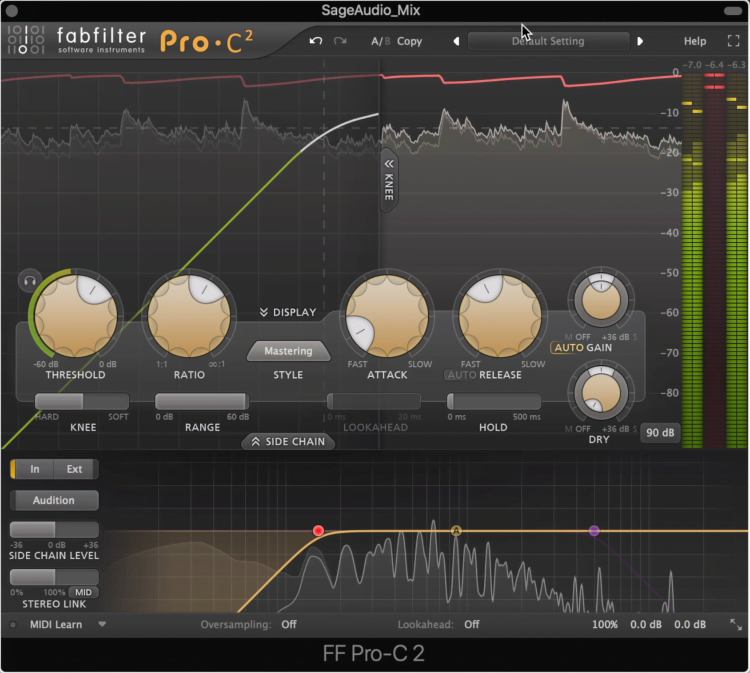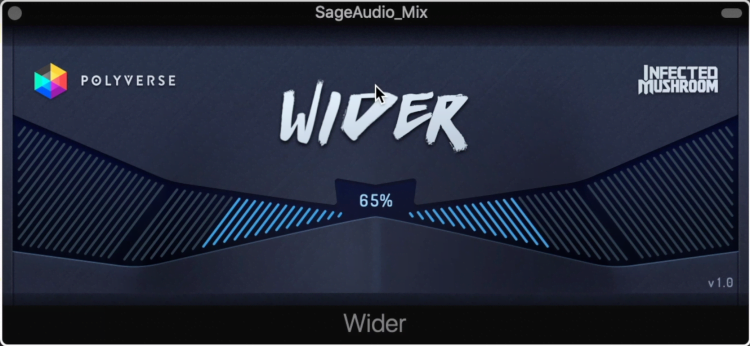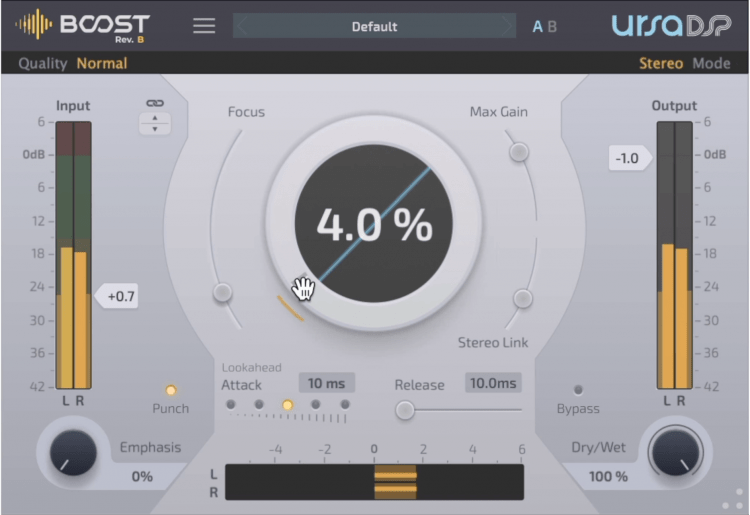INSTANTLY Make PRO Masters with These Tricks
- Compress with Internal Side Chains
- Avoid Delay-based stereo expansion
- Combine Maximization and Transient Expansion
- Use Program Dependent Processing
- Use Mid-Side Limiting
Why Compress with Internal Side Chains
If you’re mastering with a stereo compressor, you’re affecting all aspects of the track; but if you’re mastering pop or hip-hop, you may not want to compress the low-frequencies. Use an internal side chain to determine which frequencies get compressed, and let the low-end pass through unaffected.
This way as the mids and highs get compressed, the lows retain their amplitude, making them sound impressive by comparison.

When needed, use an internal side-chain to let the bass pass through unaffected.
You can accomplish something similar by using a multi-band compressor and only affecting the high ranges while leaving the low-bands threshold high enough to avoid compression.
Experiment with the two types of compressors to see which one works better for you.
Get a FREE Mastered Sample of your Song!
Why Avoid Delay-Based Stereo Imaging
Delay-based stereo imaging plugins look cool but can affect your master in a really negative way; they work by delaying part of the signal, which causes phase cancellation. Typically it's best to avoid these plugins if you want to avoid phase cancellation and the negative effects that it causes.
This cancellation is responsible for the stereo expansion, but, it also causes a strange form of distortion.
In other words the waveforms of your master will cancel another out , creating a washy sound.

Avoid stereo delay based widening.
As an alternative to delay-based stereo expansion, I recommend using mid-side processing to affect the amplitude of the mid and side image.
By increasing the amplitude of the side image, or attenuating the mid image, you create greater stereo width.
This concept works whether you’re using mid-side equalization, compression, or saturation.
How to Combine Maximization and Transient Expansion
Every once in a while, a combination of unique processing can add a lot to a master; this is definitely the case with maximization followed by transient expansion. The two effects complement each other well, as one increases loudness and detail, while the other retains transients.
There are some plugins that combine these functions like Boost by URSA DSP. With it you can subtly maximize the signal and introduce some subtle low-level compression.

This plugin combines both maximization and transient expansion.
Then you can use the punch function to introduce some transient expansion.
this brings up quieter aspects of the track, making it sound fuller, and then reintroduces dynamics by making the transients louder.
Another good combination is using the Inflator by Oxford Sonnox and then following it with Punctuate by Newfangled Audio.
Why You Should Use Program Dependent Processing
When you get the chance to, use program-dependent processing, or processing that reacts dynamically to the incoming signal. One of the best examples of a processor like this is Saturn 2 by FabFilter; with it, you can make various aspects of the processing dependent on others.

Saturn 2 allows for comprehensive program dependent processing.
This means that the distortion will vary depending on the amplitude and frequencies of the incoming signal. This is reminiscent of analog equipment, which is comprised of electrical components that react uniquely to various aspects of the track.
This dynamic and program-dependent processing causes the master to sound more complex and varied - making for a sonically nuanced and professional-sounding master.
Use Mid-Side Limiting
With mid-side limiting, you create a dynamic relationship between the mid and side channels; the mid-channel will trigger the compressor more often than the side, and to a greater extent. This means that when compression occurs, your side channel has a greater amplitude when compared to your mid-channel.
This causes the perception of stereo expansion or width.

Mid/side compression and limiting results in natural sounding stereo expansion.
This can be a great way to create natural sound and dynamic stereo expansion, making for a more nuanced master.
If your compressor or limiter has a mid-side function to it, I’d highly recommend trying it out before using a different form of stereo expansion.
Conclusion
Use the tricks shown above to create more professional sounding masters. Each technique can be used individually or combined to create some amazing sounding masters.
If your masters improve from using these tricks, let us know in the comment section of one of our videos!
If you have a mix you need mastered, send it to us here:




